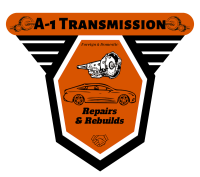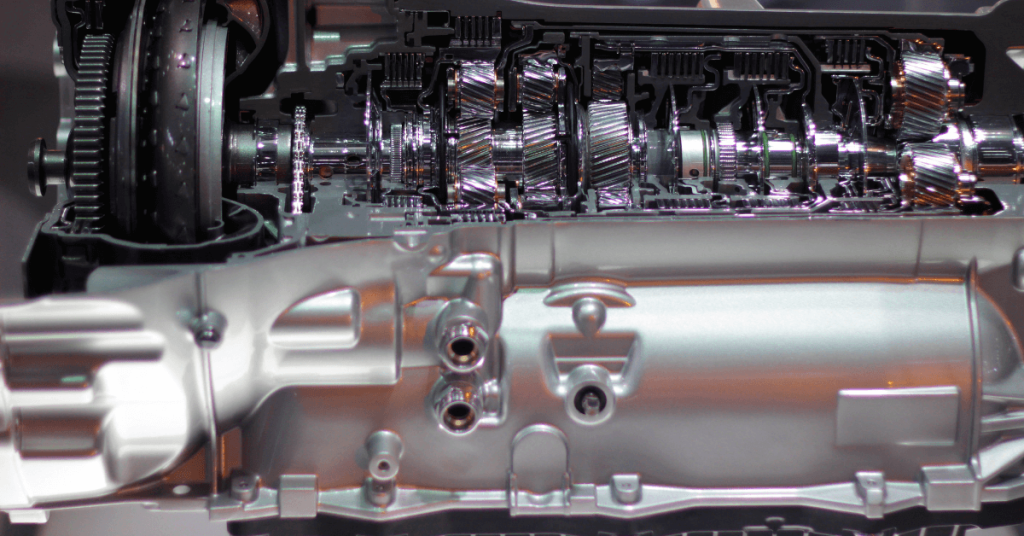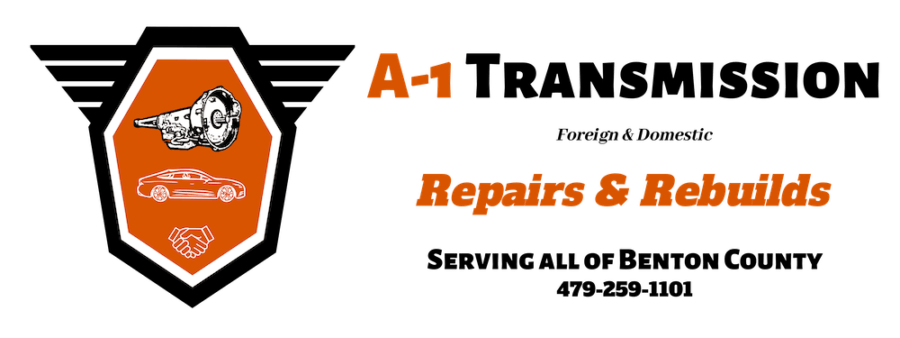If an Allison transmission code suddenly appears on your vehicle’s display, you’re likely seeking clarity on its meaning. This article directly tackles the ambiguity of these codes, offering precise explanations and actionable steps to identify and solve your transmission issues.
Key Takeaways
- Allison Transmission codes provide crucial diagnostic information that can help prevent major issues and ensure efficient vehicle operation, making their interpretation important for anyone operating heavy-duty vehicles.
- A-1 Transmission offers comprehensive Allison Transmission services including diagnostics, maintenance, and repairs, utilizing certified specialists, genuine parts, and comprehensive warranties to ensure high-quality service and customer satisfaction.
- Routine Allison Transmission maintenance is key to longevity, including checking oil and fluid levels, replacing air filters, and understanding diagnostic trouble codes to keep the transmission in optimal condition.
Decoding Allison Transmission Codes: A Comprehensive Guide
Deciphering the codes of an Allison Transmission is crucial in the world of robust transmissions. These signals and symbols act as a guide for early detection and resolution of potential problems, allowing you to maintain your vehicle’s performance efficiently.
This insight is invaluable for anyone managing transportation operations, from fleet managers to delivery drivers and recreational vehicle enthusiasts - providing smoother journeys, less downtime, and fostering a more durable transmission.
Determining which specific Allison Transmission model you have can be done with ease by locating its serial number. This unlocks substantial information pertinent to maintenance and repairs.
Given that these transmissions require less frequent upkeep than their counterparts, it’s vital to comprehend the infrequent but critical troubleshooting codes when they present themselves. With such widespread application in heavy commercial vehicles, understanding these codes benefits a diverse user group ensuring that their machinery runs at peak reliability and efficiency standards expected within the industry.
Up and Down Arrows
The up and down arrows on your Allison Transmission aren’t just for indicating direction. They’re vital tools for unlocking diagnostic data. Unlike standard fault codes, these arrows indicate various operational statuses and help you navigate to the correct mode when assessing the condition of your transmission.
With the engine switched off but with power still applied (ignition on), pressing both arrows simultaneously will give access to a range of diagnostic trouble codes available for decoding.
In practical terms, what role do these arrows play? By manipulating them through the shift selector, it’s not merely a matter of changing gears—you are also coaxing your transmission to disclose its internal state. Under typical driving scenarios, such interactions may be imperceptible.
Yet when there’s a necessity for diagnosis, those same unassuming gestures become potent means to activate the mode button or engage reverse position while harnessing crucial information from your transmission’s stored codes.
Fault Codes
Each fault code serves as a cryptic indicator of your transmission’s call for help, with every distinct code hinting at specific troubles that may be hidden within. These codes offer a precise diagnostic of the health status within your vehicle’s transmission system, from inconsistencies in electrical circuits to fluctuations in voltage levels.
When one pops up on your dashboard, it could be pointing towards anything ranging from issues with sensor operation to obstructions involving a solenoid valve. Each problem demands its own tailored strategy for troubleshooting and repair.
Consider the example of fault code P0731: this particular code alerts you to an improper gear ratio and is indicative of 1st gear not aligning as expected. Such misalignment might result in diminishing vehicular performance, which can become apparent while driving—but deciphering this error places you closer to isolating and fixing the malfunction at hand.
Whether dealing with complications like an overrun bus rest counter or glitches disrupting proper communication pathways, grasping the meaning behind these fault codes is crucial for safeguarding both optimal function of your transmission system and ensuring road safety.
Gear Ratios
Gear ratios are critical for the efficient and powerful movement of a vehicle, as they influence transmission performance. When Allison Transmission diagnostic codes indicate incorrect gear ratios, this isn’t just highlighting a small error. It’s signaling that there may be a significant mismatch with implications on how your transmission functions. Codes specifying an incorrect 1st gear or reverse ratio point to discrepancies between engine power output and wheel requirements.
The transmission control module uses input from sensors to determine the correct gear ratios required for optimal operation. Should inconsistencies appear, signal issues can occur, prompting the module to produce code that demands your immediate attention.
Diagnostic codes pertaining to gear ratios serve an important role: whether due to a controlled clutch failing to engage properly or an issue with the torque converter, these codes help ensure that your vehicle’s movements correspond accurately with what you expect when you press on the throttle.
Common Allison Transmission Problems and Solutions

Even the most robust Allison Transmissions, designed for heavy-duty performance, can experience difficulties. These issues might manifest as unexpected noises that interrupt a peaceful morning commute or as slow gear shifts that try your limits.
Such inconveniences are indicative of underlying problems with your transmission that require professional care. A-1 Transmission’s certified technicians have the skill to restore even severely damaged or worn Allison transmissions through comprehensive repairs or full overhauls.
For any vehicle to operate optimally, an efficient transmission is critical—it ensures seamless gear changes and effective harnessing of engine power. When facing complex challenges with these systems, A-1 Transmission brings specialized expertise to the table in conjunction with support from Allison Transmission’s Technical Assistance Center.
This collaboration delivers a caliber of problem-solving proficiency capable of addressing and resolving some of the most complicated transmission problems.
Signal Low Input and Signal High Input
Electrical signals are critical for controlling the operation of your Allison Transmission, and any deviation from normal voltage levels can trigger significant malfunctions. These disturbances might manifest as a transmission suddenly disengaging or cruise control failing without warning. At the core of these problems lies the electronic control system’s circuitry, which is responsible for managing gear shifts and maintaining smooth transmission performance.
To maintain both comfort and safety in your vehicle, it’s crucial to resolve any irregularities with signal inputs. Various issues may arise: a low-voltage situation due to a short circuit, an excessively high signal caused by an open circuit, or erratic behavior stemming from either a stuck-closed or stuck-open circuit could unpredictably shift your vehicle into neutral. Vigilant monitoring of the PRNDL input is vital to ensure that each command corresponds with its intended outcome—ultimately ensuring precise management over your driving experience.
Check Trans Light and Torque Converter
The illumination of the ‘Check Trans Light’ can be a distressing warning indicator for even seasoned drivers. This light, when it remains lit, signals that there is an issue within your Allison Transmission serious enough to generate a diagnostic code. Such issues could range from insufficient fluid levels to problems with the transmission cooler, which may result in the unwelcome event of transmission overheating.
Difficulties with the torque converter—the crucial mechanism responsible for transferring power from the engine to the transmission—may trigger this trans light. If there’s a malfunction in its lock-up clutch system, it might manifest as high revving without proportional increase in speed—an urgent situation necessitating prompt action.
Thus, when faced with such a problem concerning your torque converter, it isn’t merely about responding to an alert signal. Rather, you must seek expert evaluation and care for your whole transmission setup.
Shift Solenoid and Controlled Clutch Engaged
The critical role of shift solenoids in the smooth transition between gears can’t be overstated, as they act like conductors ensuring your vehicle’s movement flows without interruption. If these important elements begin to malfunction, you may experience signs such as gear slippage or a lag in acceleration - warnings not to ignore lest you find yourself with a transmission that won’t engage correctly. Issues like erratic shifts or difficulty engaging reverse might indicate trouble with either the C3 clutch or defects within the shift solenoid.
To accurately pinpoint these complex problems requires detailed scrutiny. This involves monitoring and contrasting how the solenoids behave from when the engine is first started and cold through until it reaches operating temperature where symptoms manifest most conspicuously.
There is hope for resolution though. Aftermarket repair kits are available specifically designed to replace defective trim valves effectively. To confirm successful remediation post-repair, conducting a vacuum retention test will assure that your newly installed ‘A’ valve trim maintains its integrity under regular operational conditions.
Maintenance Tips for Your Allison Transmission
Maintaining your Allison Transmission is crucial for its longevity. Ensuring the fluid levels are properly maintained guarantees smooth gear shifts and prevents potential damage due to neglect. Insufficient fluid can lead to a transmission at risk, characterized by gears that shift roughly or slip – underscoring the importance of not delay routine checks on fluid levels.
The health of your transmission is deeply connected to how clean its filters are. It’s not merely advisable but imperative to regularly check and change these filters in order to avoid complications caused by contaminants that dirty filters may allow into the system.
To prevent any overheating issues, especially during heavy use, it’s vital that you pay close attention both to maintaining appropriate fluid levels and ensuring that both cooling systems and filter conditions are kept diligently.
Oil Level and Fluid Level
Delving into the intricacies of maintaining your Allison Transmission, it’s crucial to pay attention to oil and fluid levels. Consistent verification is not merely a recommended step. It is critical for the ongoing optimal functionality of the system.
Adhering strictly to the guidelines provided in your maintenance manual, which include confirming that both transmission oil and vehicle have reached their normal operating temperatures, are essential measures for determining an accurate fluid level.
The calibration marks on your dipstick are key indicators when you’re inspecting the fluid level. To obtain a trustworthy reading, ensure that these checks occur only after the transmission has warmed up to its standard operating temperature while ensuring also that your vehicle stands on an even surface.
Both overfilling and underfilling pose significant issues—either could result in unwanted leakage or might activate fault codes within the system—making adherence to established checking protocols paramount.
Air Filter Replacement
Air filters act as the unseen protectors of your Allison Transmission, crucially ensuring that it receives only purified air to function efficiently. These filters play a pivotal role in both enhancing performance and extending the lifespan of the transmission. Depending on how dusty or contaminated an environment is, these filters may require more frequent exchanges.
Undertaking the exchange of an air filter involves simple yet essential steps: extracting the used filter, checking for any foreign material within its housing, and fitting a new filter securely into position. It’s imperative to follow specific instructions provided by either service advisories or factory manuals with precision to guarantee that this maintenance procedure supports optimum operation of your transmission.
Diagnostic Trouble Codes and Shift Selector
The gear shift selector serves a dual purpose in your Allison Transmission, acting not only as a mechanism to change gears but also as an insightful tool for diagnosing the state of the transmission. Utilizing this tool by navigating through diagnostic trouble codes can provide you with valuable information regarding potential performance issues within your vehicle. The up and down arrows are multifunctional.
Apart from their use in verifying fluid levels, they play a crucial role in beginning a process that allows for accurate determination of fluid requirements after stabilizing over roughly two minutes.
When you see the ‘check trans’ light activated, it signals that there’s more investigative work to be performed utilizing specific Allison diagnostic tools. Encountering codes such as P0729 — signaling an incorrect 6th-gear ratio — calls for Examination into signal input levels connected with these warnings.
Armed with proper diagnostics equipment, addressing and mending any faults within your transmission is rendered into a structured procedure that ensures critical aspects like controlled clutch engagement and efficient retarder operation adhere to their designated functionings.
Expert Allison Transmission Services at A-1 Transmission
Navigating the complexities of Allison Transmission maintenance and repair can be overwhelming, but A-1 Transmission emerges as a trusted source of knowledge.
This authorized distributor and service center delivers an extensive array of specialized services for these durable transmission systems, including:
- Evaluations through diagnostics
- Comprehensive overhauls
- Regular upkeep tasks
- Exchanges of fluids and filters
- Rebuilding transmissions
- Swap-outs for clutches
They ensure your Cummins turbo diesel transmission is maintained in prime condition for optimal performance, efficiency, and dependability.
A broad spectrum of offerings at A-1 Transmission not only reflects their depth in skill, but also demonstrates their dedication to meeting the distinctive needs associated with Allison transmissions. From everyday servicing to fluid exchanges, clients receive support from a one-stop destination that emphasizes accuracy in every task undertaken.
Certified Allison Transmission Specialists
The professionals at A-1 Transmission aren’t just proficient. They are trained experts specifically in Allison Transmissions, having received distinct training for both servicing and repairing with great skill. Their capabilities are reinforced by a worldwide network of similarly skilled technicians across authorized distributors and dealerships to guarantee uniform excellence in the service you obtain, regardless of your location.
When you rely on A-1 Transmission for your Allison transmission needs, you take advantage of their certified status along with access to authentic parts, top-notch aftermarket options, and all-encompassing warranties. These specialists strive not only for exemplary repair work, but also place a high value on customer fulfillment—positioning them as an esteemed provider for any transmission requirements you may have.
Genuine Allison Parts and Comprehensive Warranties
A-1 Transmission demonstrates its staunch dedication to high standards by exclusively utilizing authentic Allison parts for maintenance tasks. These components come with extensive warranties that assure both durability and optimized functionality of your serviced transmission. For customers who prefer premium aftermarket options, A-1 Transmission provides similar warranty coverage, maintaining robust customer trust no matter the selection of replacement parts.
Providing thorough warranties underscores A-1 Transmission’s unwavering commitment to superior service quality. This pledge goes beyond merely repairing or reconstructing your Allison Transmission—it serves as a testament to their assurance in delivering expert care for your vehicle, giving you confidence and serenity knowing it’s being handled professionally.
Conveniently Located and Easy Scheduling
At A-1 Transmission, the cornerstone of our service approach is to ensure that customers experience both convenience and accessibility. Positioned strategically in Arkansas’s Rogers area, our facilities are optimally located for those seeking specialized services for Allison Transmissions, providing an effortless approach to accessing our expertise. Customers can take advantage of easy-to-navigate scheduling systems which include the offer of a free quote tailored to their transmission requirements.
Scheduling your service appointment couldn’t be simpler – whether you choose to interact through a swift phone call or by navigating to our online contact page with just a few clicks. We encourage you not to delay. Seize the opportunity now by reaching out so we can provide your Allison Transmission with the professional attention it needs.
Summary
Navigating the complex language of Allison Transmission codes can be daunting, but with the insights from this guide, you’re now equipped to interpret up and down arrows, fault codes, and gear ratios with confidence. We’ve explored common problems and their solutions, and provided maintenance tips to keep your transmission in top shape.
Remember, the key to longevity is regular maintenance and addressing issues promptly. For expert services, A-1 Transmission’s certified specialists and comprehensive warranties ensure your vehicle receives the best care possible. Take control of your transmission’s health and ensure your vehicle’s reliability for the long haul.
Frequently Asked Questions
What should I do if my Allison Transmission is showing fault codes?
Consult the list of diagnostic codes to interpret the fault codes, and should you feel uneasy about conducting the troubleshooting yourself, arrange a meeting with a certified specialist in Allison Transmission for accurate diagnosis and repair.
How often should I check the fluid levels in my Allison Transmission?
It’s essential to monitor your Allison Transmission fluid levels regularly, performing checks at least monthly or after every 1,000 miles traveled. For precise maintenance intervals tailored to your transmission model, always refer to the guidance in your maintenance manual.
Can I use aftermarket parts for my Allison Transmission repair?
Indeed, it’s feasible to employ top-notch aftermarket components when fixing your Allison Transmission since they provide trustworthy operation and typically come with guarantees for added assurance.
What common symptoms indicate an Allison Transmission problem?
Should you notice unusual sounds, feel delayed gear shifts, detect gears grinding, or observe your steering wheel vibrating, it is advisable to get a professional examination of your transmission. Such signs typically point to an issue with an Allison transmission.
How do I schedule an Allison Transmission service at A-1 Transmission?
Arranging for service on your Allison Transmission at A-1 Transmission is both easy and accommodating. Simply dial 479-259-1101 or navigate to our contact page in order to set up a time for your appointment, plus you can receive a complimentary quote.




